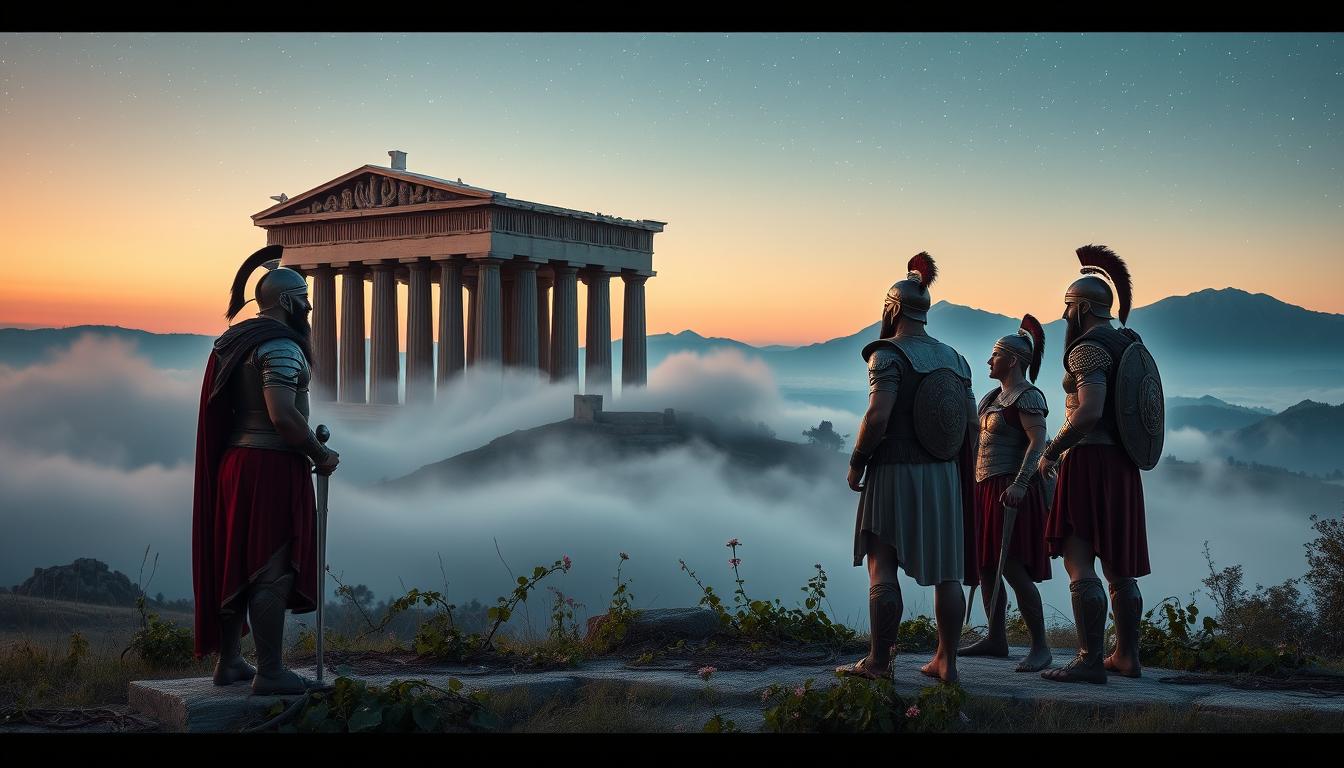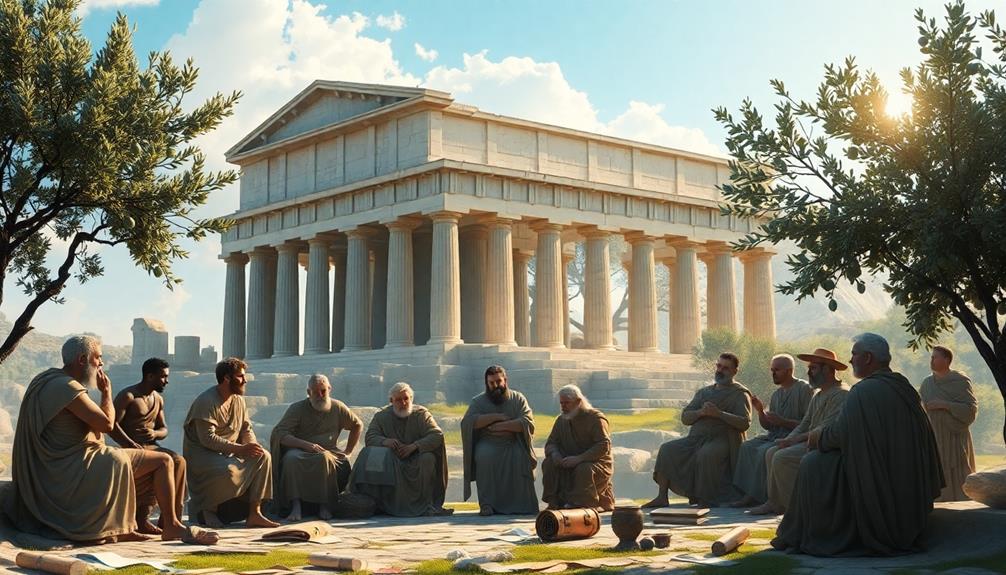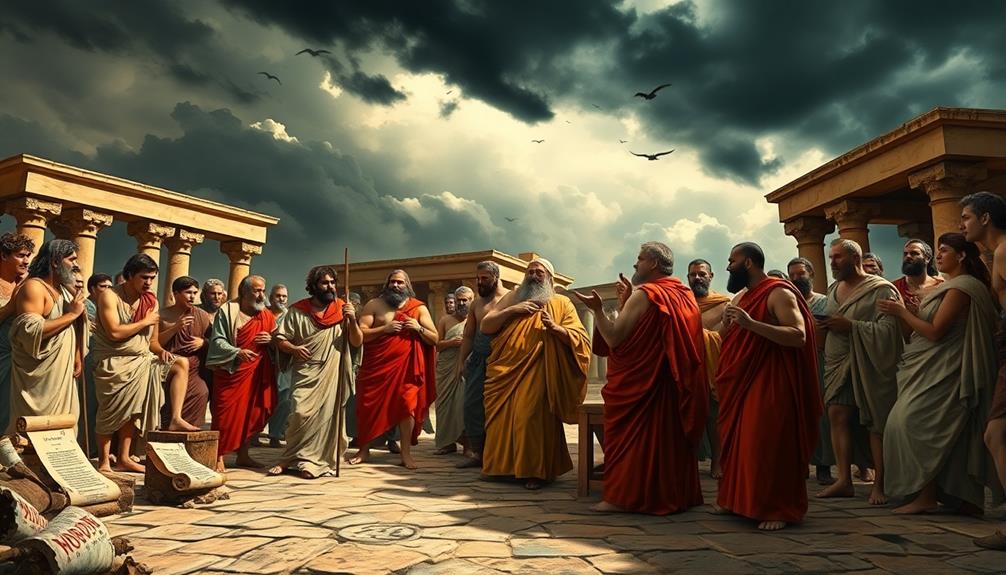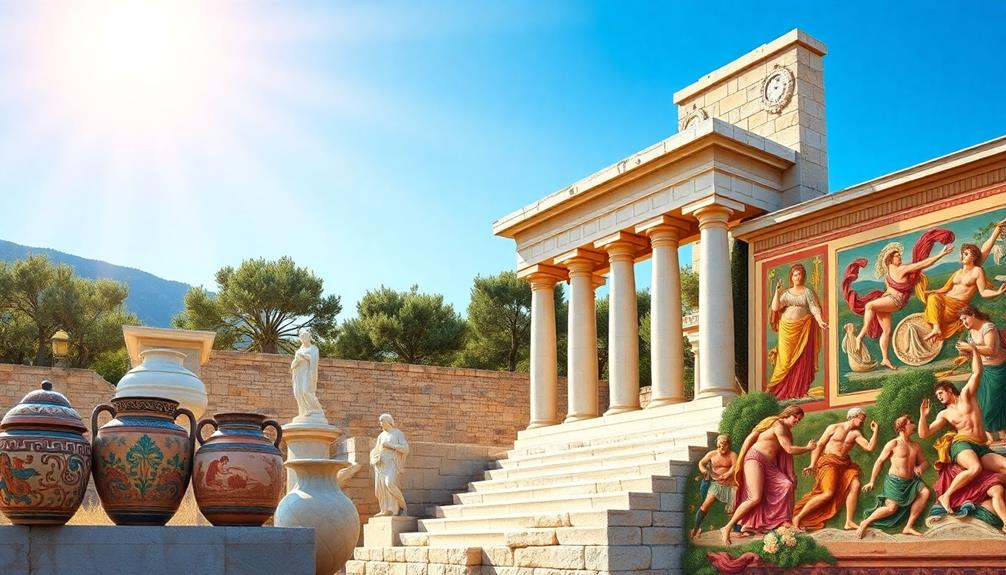Have you ever connected deeply with a story, feeling its impact through time? In the world of ancient myths, Greek heroes represent more than glory. They show us the complexity of humanity and the values of society. Names like Perseus, Hercules, and Theseus bring us stories that go deeper than their fame. These tales are not just ancient history. They are lessons in bravery, sacrifice, and finding our path, resonating with our journeys today. Let’s dive into these legends to discover the profound wisdom they offer our lives.
Key Takeaways
- Greek heroes embody complex narratives that reflect societal values.
- Each myth, such as those of Perseus and Hercules, teaches significant moral lessons.
- These stories explore themes of courage, sacrifice, and the human experience.
- Hero myths continue to resonate with contemporary audiences, inspiring modern interpretations.
- Understanding these legends enriches our connection to the past and its cultural significance.
Introduction to Greek Heroes
Greek heroes are key in hero mythology and show what ancient Greece valued. These heroes, known for their courage, strength, and smarts, go through big challenges. They highlight honor, fame, and human nature’s many sides.
The “Heroes: Mortals and Myths in Ancient Greece” exhibit showcases over 100 artworks. You’ll see statues, reliefs, and jewelry from the sixth to the first centuries BCE. It focuses on heroes like Herakles, Achilles, and Odysseus, exploring their stories and impact.
The show is split into three areas: Mythological Heroes, Worship of Heroes, and Heroes as Role Models. Each part shows why heroes mattered to society. They were admired and seen as key cultural figures. The exhibit shows ancient hero worship, including animal sacrifices linked to these stories.
The exhibit also looks at what heroism means today. Traits like altruism and self-sacrifice are still important. It shows that ancient heroes’ values are still admired. And, with interactive parts like a quiz, visitors figure out which hero they’re most like. This makes a personal link to these age-old stories.
Studying hero mythology offers deep insights into ancient Greece’s values and todays’ cultural ideals. Through these heroes’ stories, the exhibit hopes to inspire people for a long time. It aims to keep the legacy of Greek heroism alive in our changing world.
The Role of Myths in Ancient Greek Culture
Myths in ancient Greece were not just tales. They held the core values and beliefs of Greek life. They taught about loyalty, smarts, and human nature’s depth. Heroes and gods’ stories showed the Greeks about goodness, moral values, and pride’s dangers.
The stories also looked at social issues like power, giving up things, and love. The myth of Theseus, for example, shows heroism and the people’s sacrifices against the Minotaur. It shows how beliefs shaped their view of courage and duty. Every character, from Achilles to Prometheus, carried lessons that touch on universal human situations.
Think about how these myths reflect not just individual heroism but also society’s shared values. Learning these stories helps us better appreciate ancient Greek culture. It also broadens our view of human history’s social behaviors.

The Untold Stories of Greek Heroes: Beyond the Glory
Greek myths are filled with tales of brave heroes and their grand adventures. But there are stories not often told. These stories explore the heroes’ emotions and the hard choices they made. They show us not just their victories but their struggles and defeats too.
Achilles was known as the “best of the Achaeans.” He got upset and left the battle when he lost Briseis because of his pride. This hurt the Greek army a lot. It shows how personal issues can lead to bigger problems.
Odysseus was very clever but made a big mistake by angering the Cyclops Polyphemus. His long journey home was full of troubles. This story shows the thin line between being smart and too proud.
Bellerophon tried to fly to Olympus on Pegasus, driven by overconfidence. He faced a harsh punishment for that. Phaethon’s attempt to drive the Sun God’s chariot also ended in disaster. Both tales highlight the dangers of too much pride.
Arachne thought she was a better weaver than Athena and ended up as a spider. Her story is a sad lesson on the cost of arrogance.
Jason had Medea’s help on his quest for the golden fleece. But this journey was more than physical obstacles. It was about dealing with trust issues and betrayal too.
These hidden stories in Greek mythology do more than entertain. They teach us about the human condition. They show us what it’s like to overcome emotional challenges and what being a hero truly means.

Perseus: The Slayer of Medusa
Perseus is famous in Greek mythology for his brave acts, especially his fight with Medusa. His story mixes exciting adventures with family drama. He was Zeus and Danaë’s son. This made his life full of family tensions that shaped his hero story.
Family Drama and Consequences
Perseus’s tale starts with a prophecy. It said Danaë’s son would end his grandfather, Acrisius’s life. Trying to stop this, Acrisius locked Danaë away. Yet, Perseus was born thanks to Zeus turning into golden rain. Despite his grandfather’s efforts, Perseus grew up away from Acrisius’s reach.
He was raised by Dictys, a fisherman, on Serifos. Trouble grew when King Polydectes, who liked Danaë, sent Perseus to kill Medusa. This quest was meant to be impossible. But with help from Athena and Hermes, Perseus faced his family issues and beat the odds.
Beyond the Myths in Popular Culture
Perseus’s story has lasted through time, becoming part of modern culture. Movies, books, and art often explore his story. They show his battles and how he saved Andromeda. His story changes in these new settings to match today’s values.
A famous example is Benvenuto Cellini’s bronze statue. It shows Perseus defeating Medusa. Through stories like these, Perseus continues to be a hero to many. He brings Greek myths to life for people everywhere.
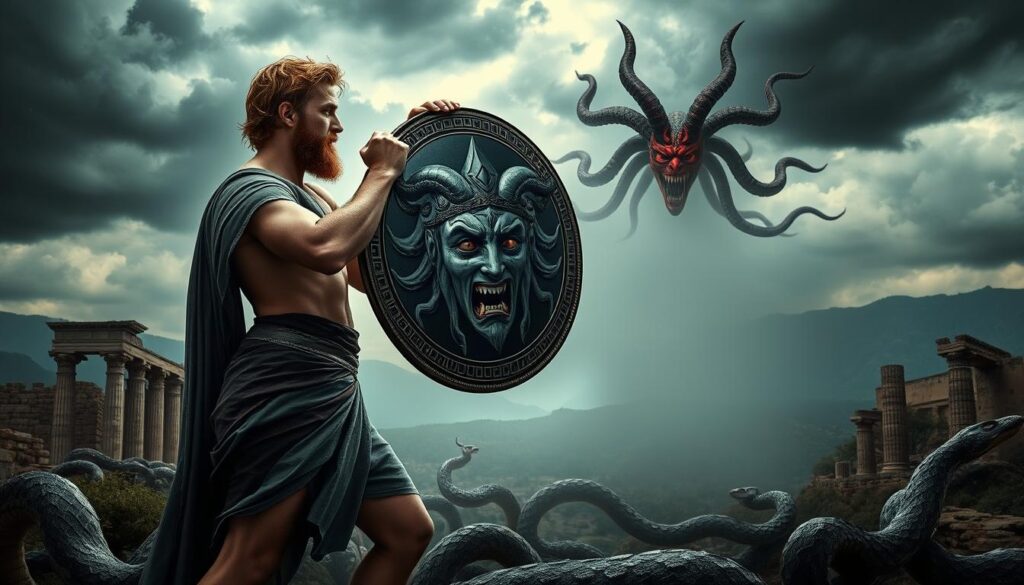
Hercules: The Hero Beyond the Disney Lens
Hercules’ story is more than the Disney movie we know. It originally comes from old myths that are much deeper. They show his heroic journeys, known as the Twelve Labors. These tasks were not just about his strength. They were key moments that helped him grow and find redemption.
The Twelve Labors Explained
The Twelve Labors are significant trials in Hercules’ story. Each one made him face tough challenges from the gods. They also showed what ancient Greece valued. These tasks mean more than just showing physical strength. They’re about the struggles we all face, like keeping going when things are tough and earning honor. Modern stories, like Disney’s, often miss these deeper meanings. They focus more on making them simple for everyone to enjoy.
Lessons from Hercules’ Journey
Hercules teaches us about courage and sacrifice. His story tells us how to deal with life’s big challenges. Facing these Labors, Hercules shows being a hero is about more than being strong. It’s about having a strong heart and never giving up. These lessons are still relevant today. They help us talk about what’s right and how we can grow, keeping Hercules’ spirit alive.

| Labor | Description | Symbolism |
|---|---|---|
| 1. Nemean Lion | Defeating the invulnerable lion | Strength and invincibility |
| 2. Lernaean Hydra | Slaying the multi-headed serpent | Persistence; overcoming multifaceted challenges |
| 3. Ceryneian Hind | Capturing the golden deer | Speed and agility in pursuit |
| 4. Erymanthian Boar | Capturing the gigantic boar | Confronting fearsome obstacles |
| 5. Stymphalian Birds | Defeating the man-eating birds | Adaptation to new threats |
| 6. Cretan Bull | Subduing the wild bull | Mastery over chaos |
| 7. Mares of Diomedes | Taming the man-eating horses | Confronting inner demons |
| 8. Bell of Hippolyta | Retrieving the belt of the queen | Confronting female power and respect |
| 9. Geryon’s Cattle | Retrieving the cattle from Geryon | Resilience in long journeys |
| 10. Apples of the Hesperides | Obtaining the golden apples | Rewarding perseverance |
| 11. Cerberus | Bringing back the three-headed dog | Facing death and darkness |
| 12. The Stymphalian Birds | Defeating the man-eating birds | Adaptation to new threats |
Theseus: The Hero of the Labyrinth
Theseus is a key figure in labyrinth mythology. He bravely fought the Minotaur. This beast, hiding in the maze of King Minos’ palace, stands for life’s hurdles. Theseus, with courage and wit, entered the dangerous labyrinth. He aimed to save the youths fed to the Minotaur yearly. And he wanted the honor due to a true hero.
Theseus’ reasons for his journey tell us a lot about ancient heroes. Some did daring deeds for their communities. Yet, many sought their own glory and fame. This desire for fame mixed with their personal goals. It gives us a deeper look at Theseus’ story.
Alongside physical battles, Theseus had his inner demons. Even as a celebrated hero, he felt alone. His relationship with Ariadne shows how lonely heroes can be. The emotional cost of their fame is a theme that repeats, highlighting what they give up for their glory.
Many stories show heroes acting on their own, without help. Theseus, despite Ariadne’s advice, chose to go alone. This part of his story makes us think about independence. It shows the fine line between accepting help and relying on oneself.

Looking into Theseus’ adventure helps us understand human complexity. His story, filled with symbols of bravery and finding oneself, reminds us. Every turn in the labyrinth, with its challenges and victories, mirrors our journey through life.
| Aspect | Details |
|---|---|
| Motivation | Seeking glory and honor versus community benefit |
| Emotional Struggles | Faced loneliness and complex relationships |
| Independence | Often disregarded assistance or guidance |
| Legacy | A blend of bravery, intellect, and personal ambition |
Achilles: Rage and Redemption
Achilles is a key figure in the Iliad, known for his complex journey. He becomes very angry after his friend Patroclus dies. This anger leads to a deep look at emotions in ancient Greek tales. The story shows Achilles as both a fighter and a vulnerable person. It’s interesting how his traits are still relatable today. We see that heroes are shaped by both their power and their battles.
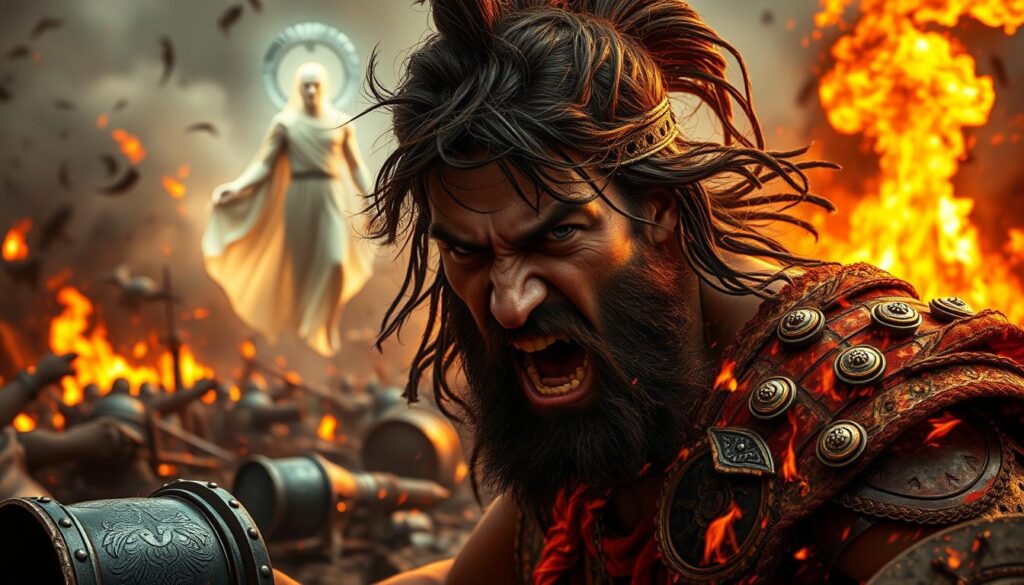
Achilles faces pride and loss throughout the story. These feelings affect his connections with others and the Trojan War’s story. His bond with Patroclus highlights the harm anger can bring. It shows a hero stuck between his sorrow and duties. This teaches us that being open about our weaknesses can actually make us stronger.
“Vulnerability is the birthplace of innovation, creativity, and change.” — Brené Brown
Ancient Greek scholars often wrote about these emotional battles. Works like “Wounded Heroes: Vulnerability as a Virtue in Ancient Greek Literature and Philosophy” by Marina Berzins McCoy dive into these ideas. They suggest that recognizing our vulnerabilities is key to personal development and ethical strength. Many authors have delved into Achilles’ story, encouraging us to see how anger can lead to seeking forgiveness.
| Theme | Description |
|---|---|
| Rage | Achilles’ fury drives the narrative and showcases the destructive power of unchecked anger. |
| Vulnerability | His emotional struggles highlight the human condition, revealing that even the greatest heroes face inner turmoil. |
| Redemption | The journey towards reconciliation with oneself and others reflects the potential for healing and growth. |
The story of Achilles touches people of all ages, mixing legend with real human feelings. Looking at his rage and redemption in the Iliad shows the deep nature of Greek heroes. It’s a tale that continues to inspire and resonate with us.
Hero Worship in Ancient Greece
In ancient Greece, honoring heroes was a big deal. People remembered great individuals with rituals and offerings after their death. These activities brought communities together. They highlighted important values and made everyone feel united.
The Rituals and Offerings to Heroes
Hero worship involved big ceremonies and gifts. For example, Achilles was celebrated in The Iliad for his bravery and honor. People gathered for these events, which included:
- Sacrifices: Animals were often sacrificed at altars dedicated to heroes, symbolizing gratitude and reverence.
- Festivals: Special festivals were organized, bringing together citizens to partake in games and performances that honored these figures.
- Offerings: Votive offerings, such as pottery or small figurines, were left at hero shrines, representing personal devotion and respect.
These acts did more than just remember heroes; they strengthened community bonds. Each offering and ceremony linked the present to the heroic past. They reminded people of their collective achievements.
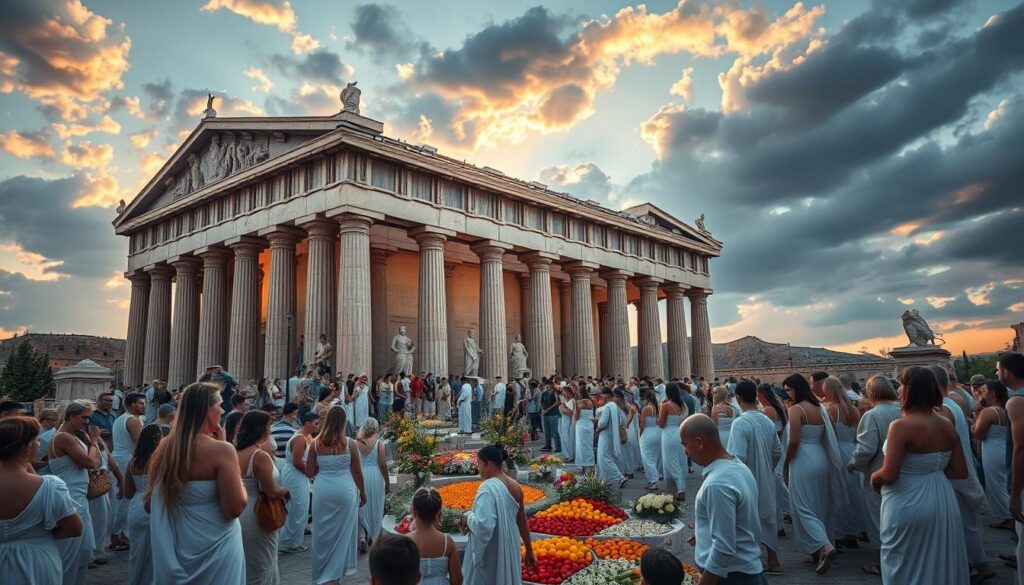
Hero worship was more than just admiring great people. It was a way to express and teach important values like courage and good character. By taking part in these activities, people kept their community’s morals alive and passed them to the next generation.
| Ritual Type | Description | Purpose |
|---|---|---|
| Sacrifices | Animals offered to heroes | To express gratitude and seek favor |
| Festivals | Community events with games and performances | To celebrate and honor heroes collectively |
| Offerings | Items left at shrines | Symbol of personal devotion and remembrance |
Hero worship in ancient Greece wove a vibrant web of traditions. These practices celebrated the past and inspired people to strive for their own greatness. They were reminded of the heroic potential within them.
Comparative Analysis of Greek Heroes and Other Cultures
Diving into comparative mythology unveils links between Greek heroes and Eastern cultural figures. This study shines a light on their moral questions and self-discovery. It helps us see the common threads in hero stories worldwide.
Similarities with Eastern Heroes
Eastern heroes share traits with their Greek peers, like bravery, smarts, and cleverness. They too face tough trials or mythical creatures. What’s common includes:
- Moral dilemmas that make us think about their decisions.
- Adventures leading to self-discovery and personal growth.
- Major divine interventions influencing their journey.
Looking at these heroes shows us how cultures view bravery.
Western Heroic Figures
Western stories echo Greek heroism, with characters showing strength and bravery. These tales explore overcoming both personal and social hurdles. Some connections are:
- Heroism’s evolution mirrors changing cultural values.
- The familiar tragic hero archetype shows flaws leading to their fall.
- Endurance against great challenges, similar to Greek epic journeys.
Literary comparisons reveal heroism’s timeless themes, linking past and present. These stories inspire us, showing the enduring nature of heroism.
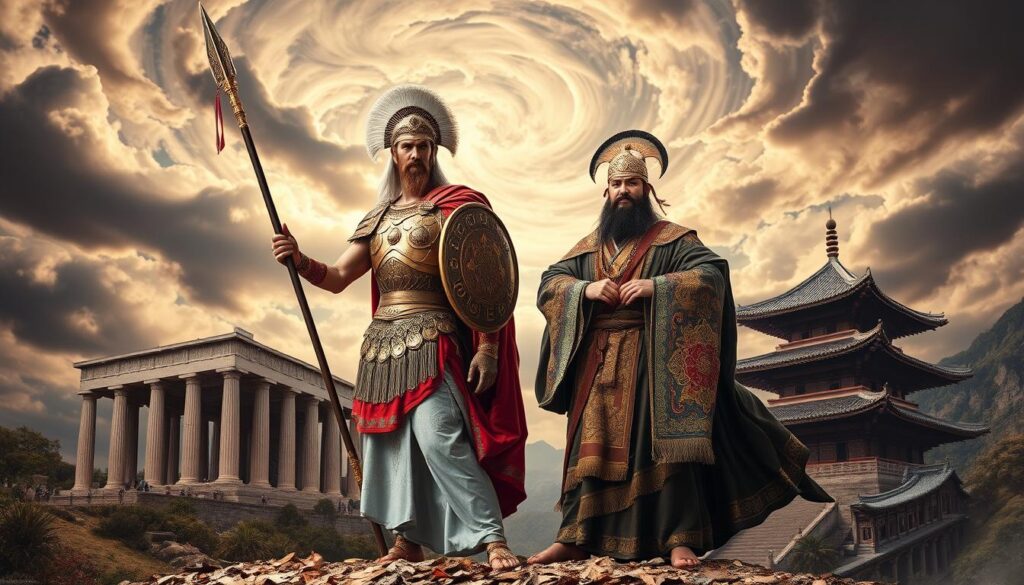
The Significance of Female Figures: Helen of Troy and Others
In Greek mythology, female heroes are very important. They show the complexity of society and power. Helen of Troy is a key figure. She’s known for her beauty and has influenced Greek legends for ages.
Helen was celebrated long before the Iliad was written. Early ceremonies for girls honored her, showing her as a beauty symbol. Various stories show Helen in many lights, different from Homer’s view. This shows her complex character and how authors saw her uniquely.

Spartan culture shaped girls like Helen, teaching them to be tough. However, Helen had her struggles. For example, Theseus once kidnapped her. During the Trojan War, she supposedly lived in Egypt, hiding for twenty years.
The Judgment of Paris is a key moment in Helen’s story. Her beauty led to the Trojan War. Her tale has many endings, with her going with Paris or to Egypt.
Poets and writers from Sappho to H.D. discussed Helen’s beauty and its challenges. H.D.’s “Helen” contrasts with Poe’s “To Helen,” focusing more on her personal relationships. Helen’s evolving story shows how female heroes can change gender norms.
Contemporary Interpretations of Greek Heroes
Greek heroes get a new twist in today’s films and books. They allow us to view old tales in new ways. Even as they change, they keep the heart of the original stories. Modern writers and directors find innovative ways to show these ancient figures.
Adapting Myths in Modern Media
Now, Greek heroes are more than entertainment. They bring up big questions about who we are, how we wield power, and what’s right or wrong. These stories mirror our world, connecting us to long-ago myths on a personal level.
Imagine seeing Hercules or Achilles in a new light. Various artists push us to rethink what it means to be a hero. They show that heroes also have doubts and fears, adding layers to their stories.
As our world changes, so do the stories of Greek heroes. New movies and books show heroes in all kinds of relationships. They include diverse heroes, breaking old stereotypes. This enriches the tales we thought we knew.
Today’s takes on myths blend old legends with current issues. They look into the heroes’ darker sides, asking us to think about what heroism really means. These new versions keep the ancient stories alive and meaningful for us.

Symbols and Themes in Greek Hero Myths
Greek hero myths are full of symbols in myths and moral lessons. They reveal the societal values like loyalty and bravery. These stories show what being a hero meant back then. Heroes like Hercules and Perseus show traits we still admire today. They teach us about human nature and society’s moral values.
Understanding Values and Morals
Each hero’s story teaches us important lessons from heroes. Take Hercules, his story is more than just his strength. It’s about redemption and sacrifice. Perseus’ fight with Medusa shows us bravery and the impact of our choices. These stories are more than just tales. They make us think about our own values and how we act in society.
Lessons for Today’s Society
Greek hero stories are still relevant today. They teach us lessons from heroes that we can use now. Heroes show us the value of being brave and ethical. Like Odysseus’ cleverness, today’s heroes, in all fields, show that same spirit. These ancient stories encourage us to think about who we are and what we value as society changes.
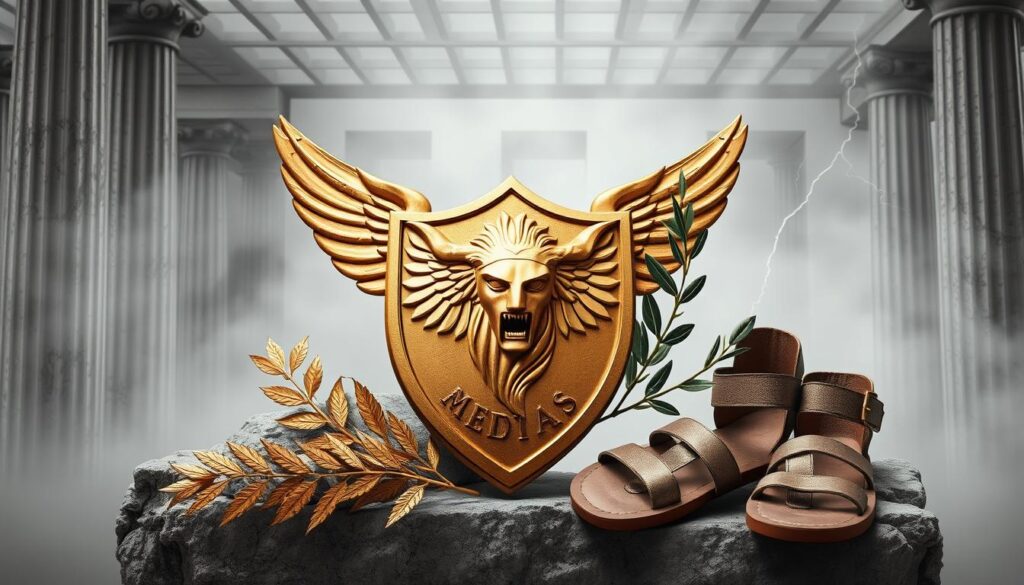
| Hero | Key Traits | Symbolic Lessons |
|---|---|---|
| Hercules | Strength, Resilience | Redemption through struggle |
| Perseus | Courage, Cleverness | The consequences of choice |
| Odysseus | Intelligence, Resourcefulness | Perseverance in adversity |
The Educational Impact of Greek Myths
Greek myths are a treasure in education, revealing ancient cultures in fascinating ways. They not only spark our imagination but also share timeless lessons and values. By exploring these myths, students learn about cultural reflection and its role in history.
How Myths Reflect Cultural Values
Students dive into Greek myths through their lessons, learning about gods, goddesses, and heroes. They focus on heroes like Hercules and Oedipus in many lessons. This helps students see the deep educational value of these stories. They learn to connect ancient morals to their own lives.
Students get to sharpen their critical thinking by comparing myths from different cultures. They hone their skills in analysis and storytelling. This ensures that Greek myths offer more than just stories—they teach valuable lessons.
Cheryl A. Hunter’s work links mythology to modern society, showing how old stories influence current literature. By exploring stories like “The Lord of the Rings” and “Harry Potter,” students see the influence of Greek mythology. These lessons in morality and ethics prove how ancient myths still shape education today.

Conclusion
Greek heroes like Hercules and Achilles show us much about human nature and right and wrong. Their stories go way beyond old myths. These heroes embody bravery and the struggles of life. They mirror our society’s ideals and the deep parts of being human. The adventures they went through, full of challenges and sacrifices, still touch our hearts. They teach us valuable lessons that last forever.
We grow to value our cultural roots more by knowing these heroes’ importance. The rise and fall of the Mycenaean civilization and the tales of these heroes are intertwined. As you dive into their legends, you explore deep moral and psychological themes. These themes are still key in today’s talks about who we are and the choices we face.
Think about how these old tales still shape our world, from movies and books to buildings and studies. Greek mythology’s impact shows that stories of heroes are not just about fame. They’re really about our ongoing search to understand life and do what’s right amidst life’s complexities.
